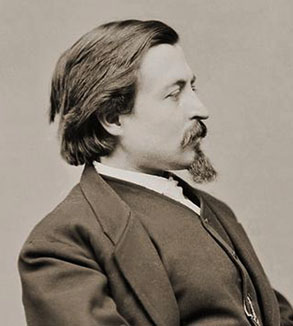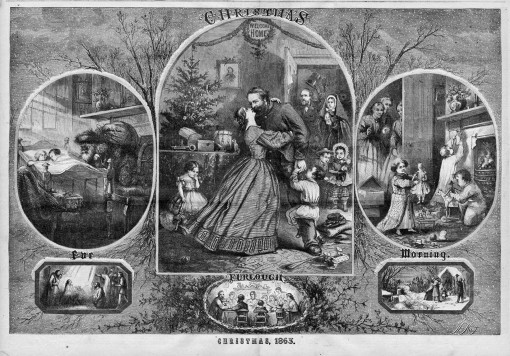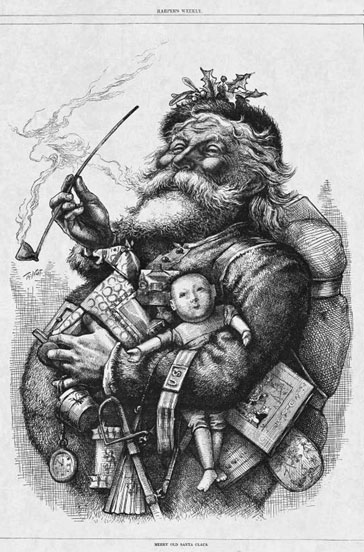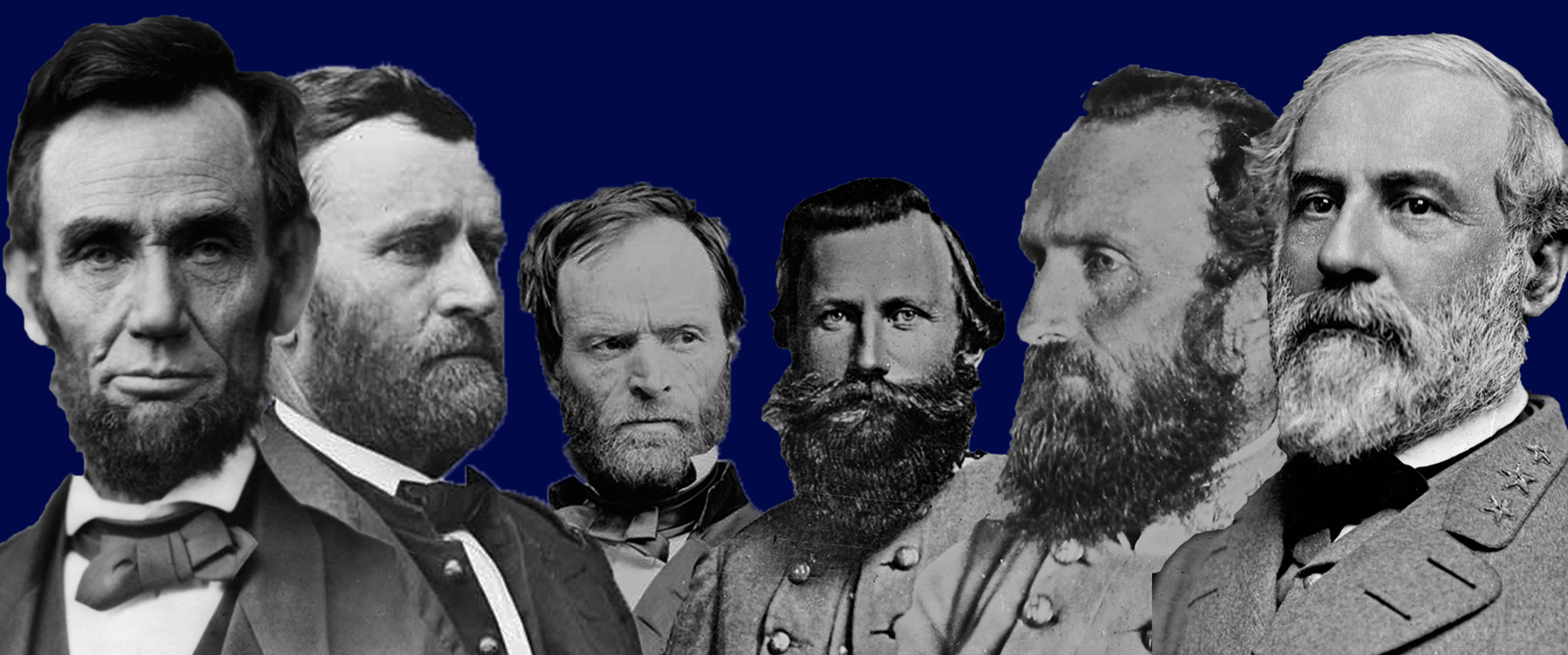
Thomas Nast is considered by many to be the father of the American political cartoon. He is credited with creating the elephant as the political symbol of the Republican Party and popularizing the use of a donkey for the Democratic Party. But outside of the political arena, his drawings of Santa Claus, which began during the Civil War, have had a profound and lasting effect on our modern impression of the “right jolly old elf.”
Born in Landau, in the Kingdom of Bavaria, on September 27, 1840, Nast was six-years-old when his mother brought him and his sister to the United States, settling in New York City. His artistic talents were evident early in life, and at age fifteen, he acquired his first job as a staff artist with Frank Leslie’s Illustrated News. In 1860, Nast left Leslie’s and began working as an artist for the New York Illustrated News. With the outbreak of the Civil War in 1861, he began drawing scenes of camp life and soldiers on the march. During this time, the overall style of his drawings began to take on a more sentimental tone, often laced with distinct political commentary. Changing jobs again in 1862, Nast became an illustrator for Harper’s Weekly, a position he would hold for the next 25 years.
In political circles, Thomas Nast was an ardent Republican who favored abolition and opposed segregation. He was a staunch supporter of Abraham Lincoln, and later Ulysses S. Grant. His initial portrayal of Santa Claus was even a political statement mixed with an element of war propaganda.
Guided by Clement Moore’s description of Santa Claus in “A Visit from St. Nicholas,” Nast first drew Santa during the 1862 Christmas season. The drawings, however, actually appeared in the post-dated January 3, 1863 edition of Harper’s Weekly. Nast’s Santa appears on the cover of the paper in an illustration titled “Santa Claus in Camp.”

Harper’s Weekly (1863)
Nast drew a patriotic Santa dressed in striped pants and a coat covered with stars sitting on his sleigh beneath a waving American flag. Two drummer boys in the foreground of the sketch appear fascinated with a jack-in-the-box toy. One soldier is shown opening his box to find a stocking stuffed with presents, while another soldier holds up the pipe he received as a present. In the background, other soldiers play football, chase a greased boar, and cook Christmas dinner.
More surprisingly, Santa is shown amusing the soldiers by hanging a wooden effigy of Confederate president Jefferson Davis. So no one is mistaken as to its meaning, a text accompanying the drawing notes: “Santa Claus is entertaining the soldiers by showing them Jeff Davis’s future. He is tying a cord pretty tightly round his neck, and Jeff Davis seems to be kicking very much at such a fate.”

Harper’s Weekly (1863)
Inside the pages of the same issue, Nast shows Santa Claus in a second drawing, but this time in a more traditional Christmas sense. Titled “Christmas Eve,” the double-circle picture shows a woman kneeling at the foot of her children’s bed as she prays for the safety of her husband, who appears in the next circle sitting alone in front of a fire, wistfully looking at photographs of his family. In the upper left corner of the drawing, Santa Claus is shown climbing down a chimney; in the upper right, he is shown distributing gifts as he rides a sleigh being pulled by reindeer.
The same family is depicted the following Christmas in the December 26, 1863 edition of Harper’s Weekly. In “Christmas 1863,” the couple is seen happily reunited as the husband returns home on furlough. In a panel to the left, Santa Claus is seen stepping from the fireplace with a sack on his back as the children sleep soundly on Christmas Eve.

Harper’s Weekly (1863)
Although Nast did not use an image of Santa for his 1864 Christmas drawing, he brought St. Nick back in the December 30, 1865 issue of Harper’s, which contains a drawing of Santa Claus smoking a pipe and wishing a “Merry Christmas to all.”
Nast would go on to produce an annual drawing of Santa Claus for the remainder of his time at Harper’s, each year adding details to the story of Santa’s life through his illustrations. His full page drawing in the January 1, 1881 issue became so popular that it has essentially served as Santa’s official portrait.

Harper’s Weekly (1881)

Leave a Reply